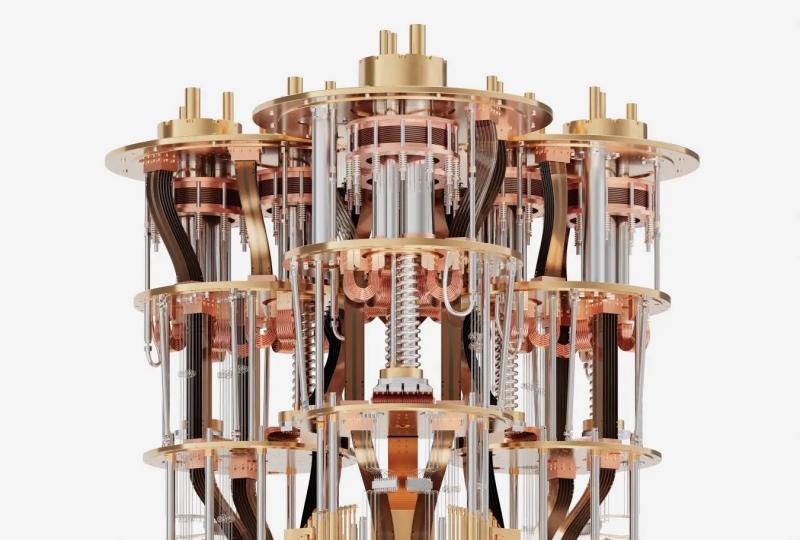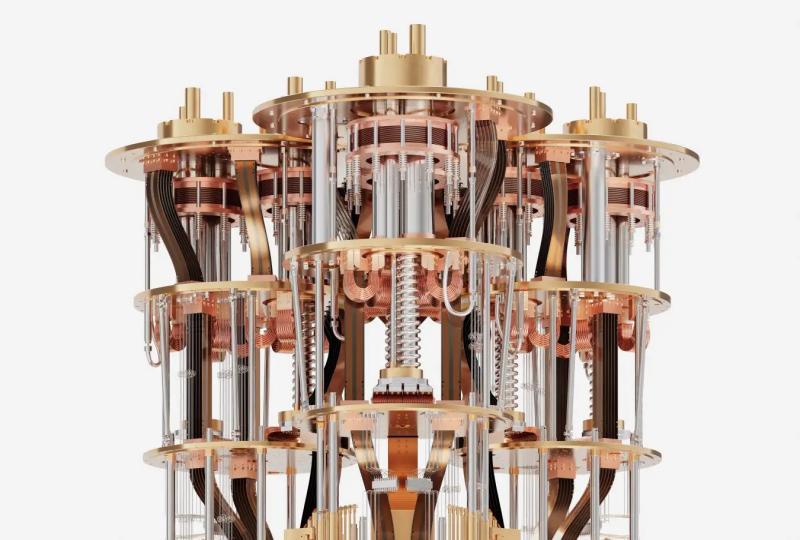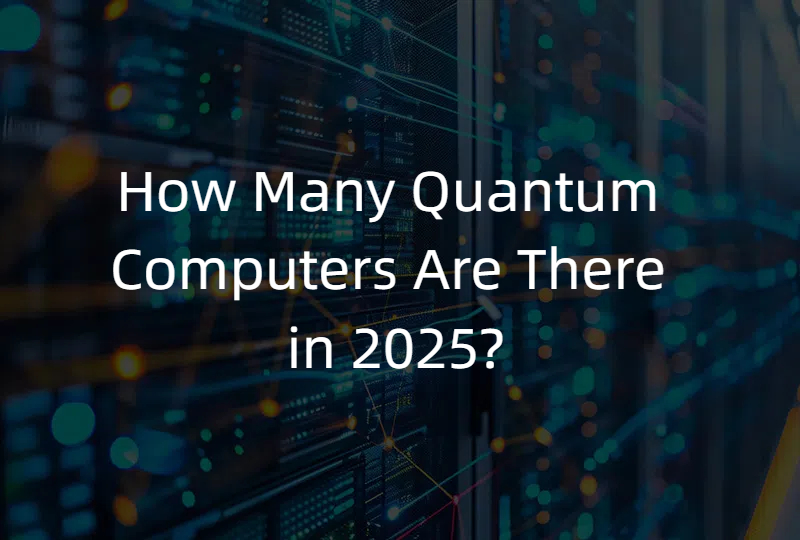Quantum Entanglement: Everything You Need to Know [2025]
2025.06.12 · Blog quantum entanglementwhat is quantum entanglement
Quantum entanglement is one of the most fascinating—and misunderstood—phenomena in modern physics. Often described as "spooky action at a distance," it challenges our classical intuitions about how particles interact across space and time.
But entanglement isn't just a theoretical oddity—it lies at the heart of quantum technologies, from quantum computing to ultra-secure communication.
In this guide, we'll break down what quantum entanglement really means, how it was discovered and proven, why it matters, and what the future holds.
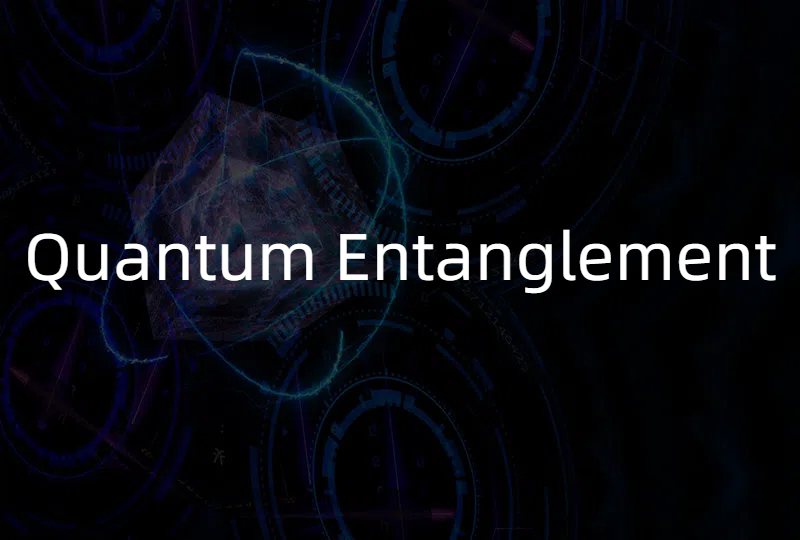
What is Quantum Entanglement?
Quantum entanglement is a phenomenon where two or more quantum particles become linked in such a way that the state of one particle instantly determines the state of the other, no matter how far apart they are. In simple terms, it's like having two perfectly synchronized dice: if you roll one and get a six, the other—no matter where it is in the universe—will also show six at the exact same moment.
This strange connection doesn't involve any signal traveling between the particles. Instead, it's as if the entangled system behaves like a single, unified whole, even when the parts are separated by light-years. Albert Einstein famously referred to it as “spooky action at a distance”, because it seemed to defy the laws of classical physics.
Entanglement is not just a quirky quantum idea—it's a fundamental feature of quantum mechanics that has been repeatedly confirmed in experiments. It plays a critical role in quantum teleportation, quantum cryptography, and quantum computing.
Quantum Entanglement vs Classical Correlation
At first glance, quantum entanglement might seem similar to classical correlation. For example, if you take two gloves and send one to New York and one to Tokyo, discovering that the glove in New York is right-handed immediately tells you the glove in Tokyo must be left-handed. That's a classical correlation—the outcome is predetermined, and the information simply reveals an already fixed fact.
Quantum entanglement, however, is fundamentally different. When two particles are entangled, their individual states are not predetermined. Instead, they exist in a shared quantum state that is only defined when one of them is measured. The moment you measure one particle, the other's state is instantly determined—even if it's light-years away. This behavior defies classical logic and cannot be explained by hidden variables alone.
Here's a key distinction:
-
Classical correlation can always be explained by shared information from the past.
-
Quantum entanglement involves non-local correlations that violate classical probability, as confirmed by Bell's theorem and related experiments.
In essence, entanglement isn't just a stronger kind of correlation—it's a different kind of connection altogether, rooted in the probabilistic and non-local nature of quantum mechanics.
Brief History of Quantum Entanglement: From EPR to Nobel
The concept of quantum entanglement has a rich and controversial history that spans nearly a century. It has evolved from a philosophical paradox into an experimentally verified pillar of quantum physics.
1. Einstein, Podolsky, and Rosen (1935): The EPR Paradox
Quantum entanglement first entered the scientific stage in 1935, when Albert Einstein, Boris Podolsky, and Nathan Rosen published a paper known as the EPR paradox. In it, they argued that quantum mechanics must be incomplete because it allowed two distant particles to influence each other instantaneously. Einstein famously referred to this as “spooky action at a distance,” which he found deeply troubling.
2. Schrödinger's Response: Introducing “Entanglement”
Later in 1935, Erwin Schrödinger responded to the EPR paper and introduced the term “entanglement” (Verschränkung in German). He recognized it as not just a curious feature, but a fundamental aspect of quantum theory that set it apart from classical physics.
3. Bell's Theorem (1964): Testing the Foundations
The debate remained theoretical until 1964, when physicist John Bell derived a mathematical inequality—Bell's theorem—that could distinguish between quantum entanglement and any local hidden variable theory. This was a game-changer: entanglement was no longer a matter of philosophy, but something that could be tested in the lab.
Bell's work laid the theoretical foundation for future experiments, which are discussed in detail in the next section: How Was Quantum Entanglement Proven?
4. 21st Century Recognition and Technological Relevance
Entanglement has since become a measurable and controllable quantum resource. It powers breakthroughs in quantum cryptography, quantum networks, and teleportation.
Its significance was globally acknowledged when the 2022 Nobel Prize in Physics was awarded to Alain Aspect, John Clauser, and Anton Zeilinger for their experimental validation of quantum entanglement.
How Was Quantum Entanglement Proven? (Key Experiments)
With the theoretical groundwork laid by Bell in 1964, scientists began designing experiments to determine whether the universe truly behaves as quantum mechanics predicts—or if there might be hidden classical explanations.
1. Bell's Theorem: The Theoretical Foundation (1964)
Physicist John Bell introduced an inequality—now known as Bell's inequality—to test whether the world operates under local realism (the idea that particles have predefined states and no influence travels faster than light). Quantum mechanics predicts violations of Bell's inequality in certain measurements of entangled particles.
If experiments violated the inequality, it would mean that local hidden variable theories (classical explanations) are insufficient—and that quantum entanglement is real.
2. Clauser–Freedman Experiment (1972)
John Clauser and Stuart Freedman performed the first direct experimental test of Bell's inequality at the University of California, Berkeley. Using entangled photons, they obtained results consistent with the predictions of quantum mechanics, not classical physics.
This was the first empirical support for Bell's theorem, but it had certain “loopholes,” such as limited detector efficiency and possible communication between particles (locality loophole).
3. Aspect Experiments (1981–1982)
In a landmark series of tests, Alain Aspect and his team in France closed some of the key loopholes. By using fast-switching polarizers on entangled photons, they ensured that the measurement settings could not influence each other during the experiment.
Aspect's results showed a clear violation of Bell's inequality, giving strong evidence that entanglement exhibits true non-locality—particles really are connected in a way that defies classical explanation.
Their results confirmed that entangled particles exhibit correlations that cannot be explained by classical physics, strongly supporting the predictions of quantum mechanics.
4. Zeilinger and Long-Distance Entanglement (1990s–2000s)
Anton Zeilinger extended these tests by demonstrating quantum entanglement over long distances—first in labs, then across tens and hundreds of kilometers using fiber optics and free-space transmission. His experiments proved that entanglement is not limited by distance, and helped pave the way for quantum communication networks.
5. Loophole-Free Bell Tests (2015)
In 2015, three separate research groups—including teams at Delft University of Technology (Netherlands) and NIST (USA)—performed loophole-free Bell tests, simultaneously closing the detection and locality loopholes.
These were the most rigorous tests of quantum entanglement to date. The experiments used entangled electron spins and photons with fast, random setting choices and high detector efficiency—ruling out classical explanations once and for all.
6. 2022 Nobel Prize in Physics
In recognition of decades of experimental proof of entanglement, the 2022 Nobel Prize in Physics was awarded to:
-
Alain Aspect (France)
-
John Clauser (USA)
-
Anton Zeilinger (Austria)
Their work demonstrated that quantum entanglement is not just a theoretical prediction—it's a measurable, real-world phenomenon with profound implications for quantum information science, opening the door to practical quantum technologies.
Through these experiments, what was once dismissed as "spooky action" is now one of the most validated phenomena in modern physics, forming the backbone of technologies like quantum cryptography, quantum networks, and teleportation protocols.
What Causes Quantum Entanglement?
Quantum entanglement does not arise from a physical “force” or signal between particles in the classical sense. Instead, it emerges from the fundamental principles of quantum mechanics, particularly superposition and unitary evolution. To understand what causes entanglement, we need to look at how quantum systems interact and evolve.
1. Quantum Superposition and Indistinguishability
At the heart of entanglement is quantum superposition—the idea that a particle can exist in multiple states simultaneously. When two quantum particles interact in such a way that their combined state is described by a single quantum wavefunction, the result can be an entangled state.
Unlike classical systems, in which each component has its own separate state, an entangled system cannot be factored into independent parts. The state of the whole system contains correlations that are not present in the individual parts.
2. Interaction and Entangling Operations
Entanglement is typically generated when two or more quantum particles interact or are acted upon by a shared quantum gate (in computing contexts). These interactions "tie" the particles' quantum states together.
For example:
-
In quantum optics, two photons may become entangled via a process called spontaneous parametric down-conversion, where one high-energy photon splits into two lower-energy entangled photons.
-
In quantum circuits, qubits are entangled using gates such as CNOT (Controlled-NOT) and Hadamard. These gates mathematically intertwine the states of two qubits, creating entanglement.
Mathematically, this is described using tensor products of Hilbert spaces. When the combined state cannot be expressed as a simple product of individual states, the system is entangled.
3. Conservation Laws and Symmetry
Sometimes, entanglement arises due to conservation laws (such as conservation of spin or momentum). For instance, if a spin-zero particle decays into two particles, their spins must be opposite to conserve total angular momentum. This creates a pair whose spin states are entangled, because knowing one automatically defines the other.
4. Entanglement as a Result of Measurement
Interestingly, measurement itself can also cause or reinforce entanglement, especially in systems with quantum feedback. If a system of particles is prepared in an uncertain or mixed state and then a joint measurement is performed, the resulting post-measurement state can be entangled.
In short, quantum entanglement is caused by the inherent non-locality and mathematical structure of quantum mechanics. It's a direct consequence of how quantum systems evolve when they interact, and how their information becomes fundamentally inseparable.
How Does Quantum Entanglement Work?
Quantum entanglement works by creating a shared quantum state between two or more particles, such that the state of one particle cannot be described independently of the others—even across vast distances. This behavior is unlike anything we observe in classical physics and is governed by the rules of quantum mechanics.
Let's break down how it works in practice.
The Principle of Non-locality
One of the defining features of quantum entanglement is non-locality. This means that the measurement of one particle's state instantly affects the state of the other, no matter how far apart they are. This correlation violates classical locality, which states that no information or influence can travel faster than the speed of light.
Non-locality is not a communication channel (no usable information is transmitted faster than light), but it reflects a deep interdependence in the wavefunction that describes the entangled system. Experiments—especially loophole-free Bell tests—have consistently confirmed these non-local effects.
Quantum Entanglement Formula (e.g., Bell State, EPR Pairs)
Entangled states are described mathematically using quantum state vectors, which are often expressed in Dirac notation. The simplest and most well-known example is the Bell state, a maximally entangled state of two qubits:

This means that if one qubit is measured as 0, the other must also be 0; if the first is 1, the second will also be 1. However, prior to measurement, the system is in a superposition of both outcomes.
There are four Bell states in total:
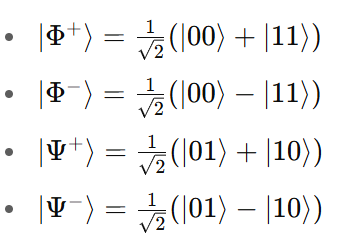
Another frequently cited model is the EPR pair, introduced in the Einstein–Podolsky–Rosen paradox. It is a theoretical construct where two particles share a total momentum or spin, reinforcing the idea that their measurements are perfectly correlated.
What Is Entanglement in Quantum Computing?
In quantum computing, entanglement is not just a theoretical curiosity—it's a computational resource. It enables qubits to perform calculations in a highly correlated and parallel fashion, allowing quantum algorithms to solve certain problems exponentially faster than classical ones.
Entangled qubits are created through specific quantum logic gates, such as Hadamard and CNOT, which manipulate the joint state space of multiple qubits. This enables powerful phenomena like quantum teleportation, quantum error correction, and entanglement-assisted algorithms.
For a detailed exploration, check out our full guide: What Is Entanglement in Quantum Computing & How It Works
Practical Applications of Quantum Entanglement
1. Quantum Cryptography and Secure Communication
One of the earliest and most practical uses of entanglement is in quantum key distribution (QKD). Protocols like BB84 and E91 use entangled particles to generate encryption keys that are theoretically unhackable. Any attempt to eavesdrop on the entangled particles immediately changes their state, alerting the communicating parties and ensuring secure data transfer.
2. Quantum Computing
Entanglement is the backbone of quantum computing. By entangling qubits, quantum computers can represent and process vast amounts of information simultaneously, enabling algorithms like Shor's algorithm for factoring large numbers and Grover's algorithm for database searching. This capability promises revolutionary advances in fields such as cryptography, optimization, and machine learning.
3. Quantum Teleportation
Quantum entanglement enables the phenomenon of quantum teleportation, where the exact state of a particle is transmitted instantaneously to another particle at a distant location, without moving the particle itself. This is key for developing quantum networks and quantum internet, facilitating ultra-secure and instantaneous information transfer.
4. Quantum Sensors and Metrology
Entangled particles are used in advanced quantum sensors to achieve sensitivity beyond classical limits. Applications include gravitational wave detection, magnetic field sensing, and atomic clocks with unprecedented precision. These sensors can improve navigation systems, medical imaging, and environmental monitoring.
5. Fundamental Physics and Research
Beyond practical applications, entanglement experiments help physicists probe the foundations of reality, test the limits of quantum mechanics, and explore phenomena like quantum gravity and black hole information paradox. This fundamental research may one day lead to new physical theories and technologies.
Challenges with Quantum Entanglement
1. Quantum Decoherence and Environmental Noise
Entangled states are extremely fragile. Interaction with the environment—such as thermal fluctuations, electromagnetic fields, or stray particles—can cause decoherence, which destroys the delicate quantum correlations and effectively “breaks” the entanglement.
Maintaining entanglement over time and distance requires advanced isolation techniques and error mitigation strategies, which are complex and costly.
2. Scalability
Creating entanglement between just two particles is challenging but feasible; however, scaling entanglement to many particles (multi-qubit entanglement) necessary for practical quantum computing or networks remains a major hurdle.
The complexity grows exponentially, and preserving coherence across many qubits requires breakthroughs in quantum error correction and hardware design.
3. Detection and Measurement Limitations
High-fidelity measurement of entangled states demands extremely sensitive detectors with near-perfect efficiency. Any loss or noise in the detection process can obscure or mimic entanglement signals, complicating experiments and applications.
Improving detector technology and closing “loopholes” in entanglement verification is an ongoing research focus.
4. Distance Limitations in Quantum Communication
Although entanglement can exist over large distances, transmitting entangled particles through optical fibers or free space faces challenges such as photon loss and signal degradation.
Developing quantum repeaters and robust entanglement distribution methods is essential to realize scalable quantum communication networks and a future quantum internet.
5. Theoretical Challenges and Interpretations
Quantum entanglement also challenges our fundamental understanding of reality, locality, and causality. Interpretations of quantum mechanics differ on what entanglement “means,” leaving unresolved questions in physics and philosophy.
This theoretical ambiguity sometimes complicates consensus in experimental design and interpretation.
Quantum Entanglement Research: Latest Findings & Breakthroughs
Discovery of a New Type of Quantum Entanglement
In a groundbreaking study, researchers from Brookhaven National Laboratory and the Technion – Israel Institute of Technology observed quantum entanglement between non-identical particles—specifically, oppositely charged pions (π⁺ and π⁻) produced in near-miss collisions of heavy ions. By analyzing interference patterns, they confirmed entanglement without requiring the particles to be identical, marking a significant advancement in testing quantum non-locality and expanding entanglement research into new physical regimes.
Source: https://phys.org/news/2025-04-quantum-entanglement.html
SEAQUE: Testing Quantum Entanglement in Space
In the Space Entanglement and Annealing Quantum Experiment (SEAQUE), researchers aim to demonstrate space-based quantum communication capabilities using entangled photons. Installed externally on the ISS via the MISSE-20 platform, SEAQUE will test a robust miniature waveguide-based entangled-photon source, marking the first time such integrated optics have flown in space
Key objectives include:
-
Validating entangled photon generation and detection in space, using compact, rugged hardware more resilient than previous bulk-optics systems
-
Performing Bell-test measurements on orbit, demonstrating quantum entanglement survives launch and exposure to radiation
-
Testing laser-induced annealing (‘self-healing') of photon detectors damaged by space radiation, aiming to restore performance and enhance detector longevity
SEAQUE represents a major step toward scalable quantum networks and space-based quantum computing, offering a practical platform for future global quantum communication infrastructure.
Source: https://science.nasa.gov/biological-physical/investigations/seaque-space-entanglement-and-annealing-quantum-experiment/
Featured Content


